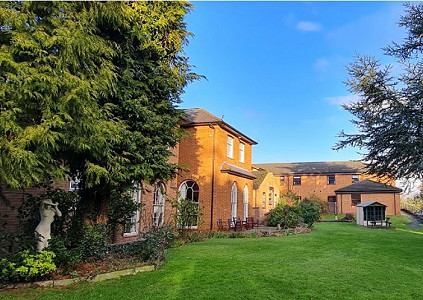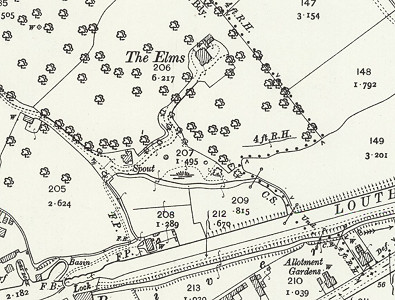Clara Stovin’s account of the Louth Flood

The Elms. Credit: Highgate Care

Location of The Elms
Saturday 29 May 1920 was the day of the Louth Flood. The previous week Clara Jane Stovin had moved into The Elms (now a care home) along with her husband Walter and two small girls, on the eastern side of the town. Harriet was their maid, and Sylvester their gardener. On Monday 31 May Clara described it in a letter to her friend:
In Louth at last – our first weekend is one never to be forgotten as long as we live! You will have read the papers and will have been shocked. To think of peaceful little Louth transformed in half an hour to a scene of horror and desolation.
The papers do not exaggerate one little bit - as I can testify being unfortunately an eyewitness of the coming and going of the mighty torrent - which absolutely tore across our kitchen garden, carrying debris of every description - chicken houses, huge sheds, pig styes, boats, furniture (mangles and pianos!) fowls, and on rafts all huddled up and miserable - pigs, etc. It was too awful for words.
First, we had torrential rain, with intense gloom so that we thought of getting a lamp at 4.30 pm. Walter and I had intended motoring to Spilsby to visit friends and were waiting for the rain to ease. After a time, it seemed to clear a little - so Walter went out to start the car. Most providentially, it refused to go - and reluctantly we gave up the idea of our journey.
Had we gone, we could not possibly have returned on Saturday night, and could not have communicated with Harriet (our one and only maid) and she and the little girls would have been frantic. I simply can’t tell you how thankful I am we were not permitted to go.
Directly after we decided to remain at home, we heard a tremendous downpour upstairs - flew up aloft to find a piece of the ceiling had fallen in and almost all the bedrooms flooded! If ‘seven maids with seven mops’ had assisted instead of merely Harriet, we could easily have made use of them, but we could not prevent it coming through the downstairs ceilings.
Just as we were getting the trouble well in hand, Harriet said in her Lincolnshire way, ‘Does the river reckon to be at the bottom of the garden?’ I looked out to see gardens and fields flooded and we could hear a mighty roar!
We ceased operations here - flew halfway down the drive and found the lower half submerged. Then we saw the torrent in all its fury, and we shall never, never forget it. We could see people on the second storey in several homes waiting to be rescued and one man swam across to us for help and we fetched ropes etc.
Of course, we only saw a section of it, and in the lower part of the town it was far worse. Sylvester was doing rescue work, waist deep in water until 10.30 pm. He is splendidly strong and could carry women and children down the ladders – two men holding the ladders at the bottom and a rope being slung across the street for the women to hold on to. When it had subsided, we drove all round the town and viewed it from different points and it was an incredibly desolate scene.
Yesterday, it was even worse – yellow mud was being swept from the lower rooms, and furniture was being scrubbed and sprayed on every hand. I think the loss of life is much greater than the papers state - several were drowned from houses quite near to us and a great many are reported missing.
Sylvester had slaved for six solid weeks to get the kitchen garden in something like order and had shown me round with great pride a night or two before the flood came. Now it is covered with thick mud – a horrible swamp with timber, old roofs, tin cans and rubbish of every description strewn all over. One mustn’t grieve over a small garden, but it is a depressing sight to say the least of it.